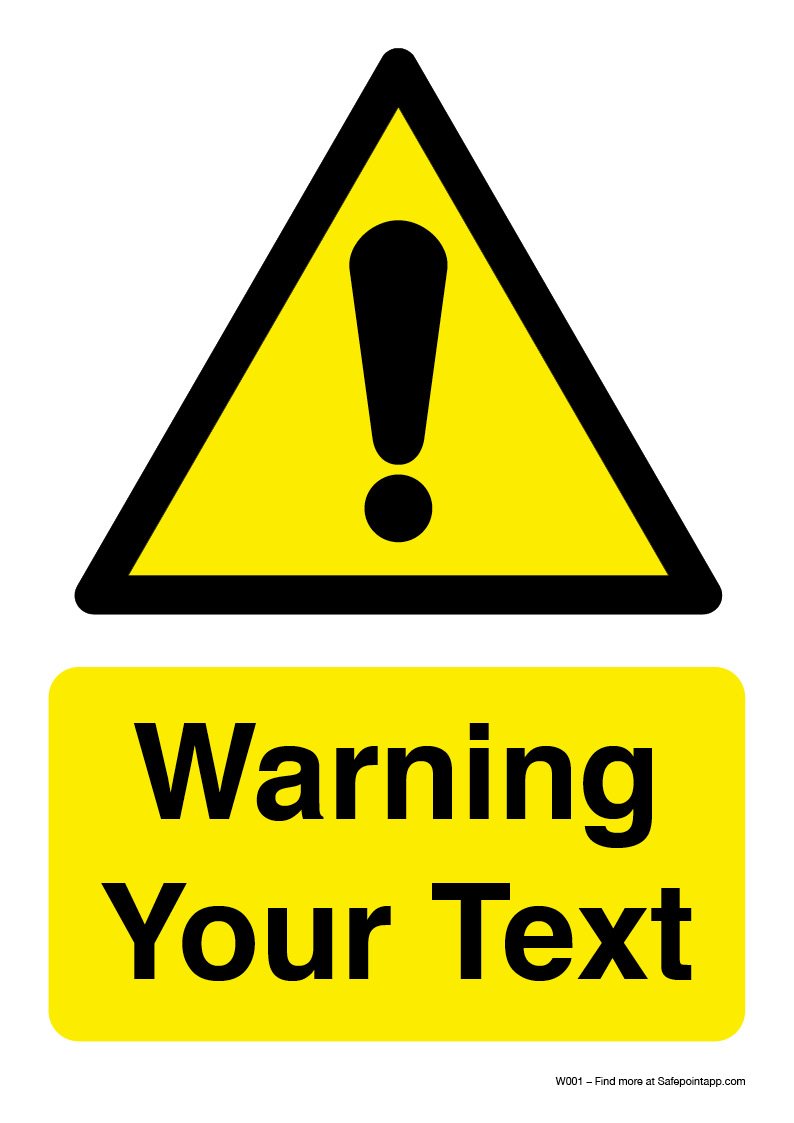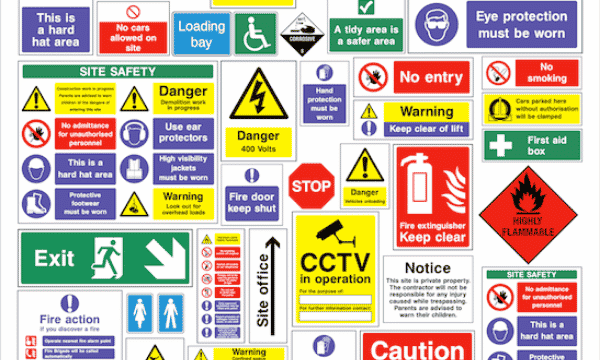How Safety Signs Improve Workplace Safety: Ideal Practices for Implementation
How Safety Signs Improve Workplace Safety: Ideal Practices for Implementation
Blog Article
Sorts Of Safety And Security Indications You Need to Know for Ultimate Defense

Warning Indications
Caution signs play an important role in making certain safety by communicating crucial info regarding possible dangers. These signs are crucial in various atmospheres, consisting of offices, public areas, and roads, where they signal individuals to risks that might not be instantly noticeable. Usual instances of warning signs include those showing unsafe surface areas, electrical hazards, and reduced overhead clearance.

It is imperative for organizations to routinely evaluate the positioning and visibility of warning indicators to ensure they properly communicate dangers. Educating workers and the public on the definitions of these indications further reinforces their relevance in promoting safety culture - Health and Safety Signs.
Restriction Indications
Restriction indicators function as crucial signs designed to connect constraints and habits that ought to be avoided in certain areas. These indicators are critical for ensuring security and conformity, helping to stop accidents and mitigate threats in numerous settings, including workplaces, public locations, and building and construction websites. Typically characterized by a vibrant red circle with a diagonal line, restriction indications convey a clear message that specific activities are not allowed.
Common instances include indications that prohibit smoking cigarettes, eating, or access into limited areas. The performance of these signs pivots on their visibility and simpleness, making it easy for people to understand the designated message at a glance. Appropriate positioning is vital; they should be found in high-traffic locations and near the points of potential offense to make the most of awareness.
Prohibition indications not just shield individuals but likewise support business plans and legal demands (Safety Signage). Their usage fosters a culture of safety and security and regard for policies, adding to a more secure environment for everybody. Subsequently, understanding and sticking to the directives of prohibition indications is imperative to guarantee conformity and advertise total safety and security in any given area.
Required Indicators
Required indicators are important components of safety communication, developed to inform individuals of activities that must be required to make certain safety and security and conformity in numerous atmospheres. These indications are defined by their unique blue background and white symbols or message, sharing clear guidelines that need to be complied with.
Typical examples of mandatory signs consist of regulations such as "Use Individual Safety Devices" (PPE), "Use Hearing Protection," and "Have To Clean Hands." Each of these indications serves a specific objective, targeting habits that enhance safety and security and minimize dangers in workplaces, public centers, and building sites.
The value of necessary indications can not be overstated; they not just assist in preventing crashes and injuries but additionally guarantee adherence to legal policies and business policies. In environments where threats are common, the visibility of these indications reinforces a culture of safety and responsibility among all people.
To maximize their efficiency, obligatory indicators should Safety Signage be positioned in visible places, guaranteeing they are quickly seen and recognized by everyone around - Safety Signs. On a regular basis inspecting and preserving these signs is also critical to guarantee their quality and presence, therefore advertising a safer setting for all
Emergency Situation Info Indications
Emergency situation information indications play a critical function in leading individuals during situations, offering necessary details that can help make sure safety and security and promote effective reaction activities. These indicators are made to deliver clear and instant directions in emergency situation scenarios, such as fires, chemical spills, or all-natural disasters.
Generally, emergency info indications consist of crucial information such as discharge courses, emergency situation call numbers, areas of initial help terminals, and guidelines for making use of emergency situation tools, such as fire extinguishers or defibrillators. Their layout usually includes vibrant shades, high comparison, and generally identifiable signs to make sure exposure and comprehension even in high-stress situations.
It is vital for organizations to routinely review and upgrade their emergency information indicators to show any adjustments in structure designs, emergency treatments, or get in touch with details. Proper positioning of these indicators is similarly vital; they must be placed in locations with high foot traffic and at eye degree to make certain that they are conveniently visible during emergency situations.
Guideline and Directional Signs
Guideline and directional indications are crucial devices for navigation within numerous atmospheres, ensuring that people can find their method efficiently and safely. These indicators serve a critical function in both public and exclusive rooms, including offices, medical facilities, colleges, and recreational locations.
Generally including arrowheads, symbols, or message, standard and directional signs supply clear guidelines on navigating complicated formats. They aid avoid complication and decrease the risk of mishaps by routing individuals towards departures, toilets, and specific sights. Reliable signage is developed to be quickly well-known, often using standard shades and forms to share details quickly.
In addition to helping navigating, these indicators play an essential role in emergency preparedness. During crises, well-placed directional indications can lead individuals to security, minimizing panic and making sure organized discharges. Normal upkeep and updates to these indicators are crucial, as changing layouts or new hazards might demand changed advice.
Verdict

Understanding the differences between warning indicators, restriction signs, mandatory indicators, and emergency situation info indicators can dramatically improve overall safety and security understanding.Warning indicators play a vital function in ensuring safety and security by communicating important details about possible dangers. These signs are critical for making sure safety and conformity, helping to protect against accidents and minimize dangers in various atmospheres, including work environments, public locations, and building websites. During situations, well-placed directional signs can lead people to safety, minimizing panic and ensuring organized discharges. Warning indicators, prohibition indications, mandatory indications, and emergency situation information and directional indications each offer distinct functions in sharing important details regarding risks, constraints, safety actions, and navigational advice.
Report this page